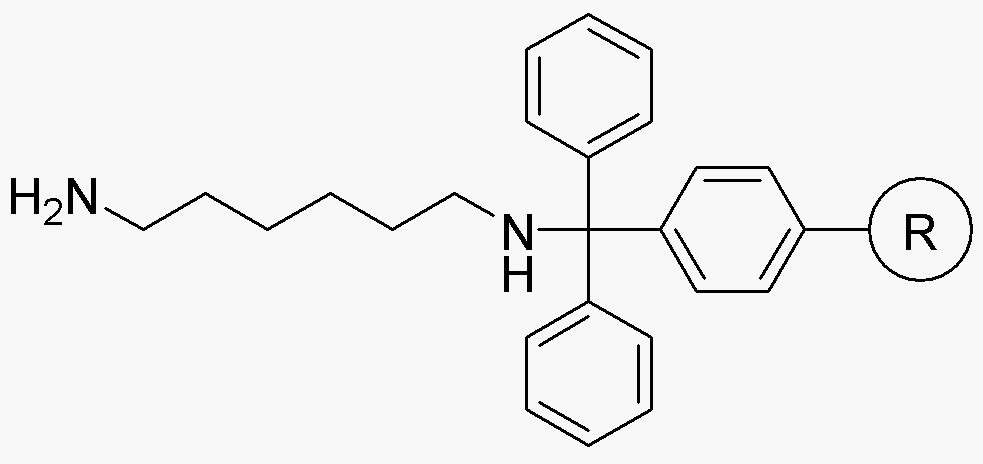N-Trityl-hexamethylenediamine, polymer bound is widely utilized in research focused on:
- Polymer Chemistry: This compound serves as a building block for synthesizing various polymers, enhancing their mechanical properties and thermal stability.
- Catalysis: It acts as a catalyst in organic reactions, improving reaction rates and yields, which is particularly beneficial in pharmaceutical synthesis.
- Drug Delivery Systems: The polymer-bound form can be used in developing drug delivery systems, allowing for controlled release of therapeutic agents in targeted areas.
- Surface Modification: It is employed to modify surfaces for improved adhesion and compatibility in coatings and adhesives, making it valuable in the automotive and aerospace industries.
- Biotechnology: This compound is useful in bioconjugation applications, aiding in the attachment of biomolecules to surfaces, which is crucial for biosensor development.
General Information
Properties
Safety and Regulations
Applications
N-Trityl-hexamethylenediamine, polymer bound is widely utilized in research focused on:
- Polymer Chemistry: This compound serves as a building block for synthesizing various polymers, enhancing their mechanical properties and thermal stability.
- Catalysis: It acts as a catalyst in organic reactions, improving reaction rates and yields, which is particularly beneficial in pharmaceutical synthesis.
- Drug Delivery Systems: The polymer-bound form can be used in developing drug delivery systems, allowing for controlled release of therapeutic agents in targeted areas.
- Surface Modification: It is employed to modify surfaces for improved adhesion and compatibility in coatings and adhesives, making it valuable in the automotive and aerospace industries.
- Biotechnology: This compound is useful in bioconjugation applications, aiding in the attachment of biomolecules to surfaces, which is crucial for biosensor development.
Documents
Safety Data Sheets (SDS)
The SDS provides comprehensive safety information on handling, storage, and disposal of the product.
Product Specification (PS)
The PS provides a comprehensive breakdown of the product’s properties, including chemical composition, physical state, purity, and storage requirements. It also details acceptable quality ranges and the product's intended applications.
Certificates of Analysis (COA)
Search for Certificates of Analysis (COA) by entering the products Lot Number. Lot and Batch Numbers can be found on a product’s label following the words ‘Lot’ or ‘Batch’.
*Catalog Number
*Lot Number
Certificates Of Origin (COO)
This COO confirms the country where the product was manufactured, and also details the materials and components used in it and whether it is derived from natural, synthetic, or other specific sources. This certificate may be required for customs, trade, and regulatory compliance.
*Catalog Number
*Lot Number
Safety Data Sheets (SDS)
The SDS provides comprehensive safety information on handling, storage, and disposal of the product.
DownloadProduct Specification (PS)
The PS provides a comprehensive breakdown of the product’s properties, including chemical composition, physical state, purity, and storage requirements. It also details acceptable quality ranges and the product's intended applications.
DownloadCertificates of Analysis (COA)
Search for Certificates of Analysis (COA) by entering the products Lot Number. Lot and Batch Numbers can be found on a product’s label following the words ‘Lot’ or ‘Batch’.
*Catalog Number
*Lot Number
Certificates Of Origin (COO)
This COO confirms the country where the product was manufactured, and also details the materials and components used in it and whether it is derived from natural, synthetic, or other specific sources. This certificate may be required for customs, trade, and regulatory compliance.


